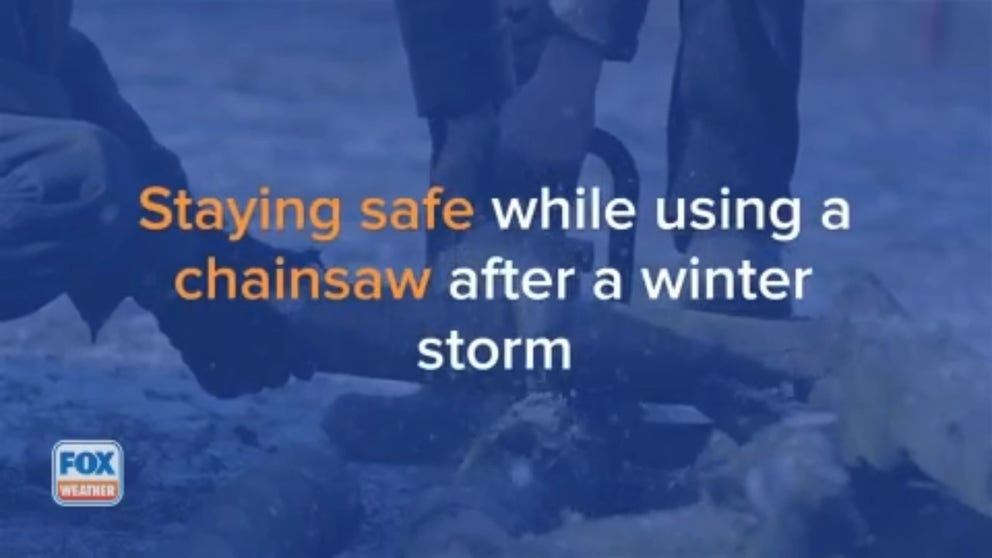7 tips to stay safe when using chainsaws after a winter storm
Here are 7 tips to safely operate a chainsaw, courtesy of the Occupational Safety and Health Administration:
Staying safe while using a chainsaw after a winter storm
Whether from strong winds or heavy snow/ice, winter storms can leave a swath of damage that could need a chainsaw to clear away. Here’s how you can stay safe while using a chainsaw after a winter storm.
Just because a storm has passed doesn't mean the dangers have ended.
Whether from ferocious winds or heavy snow and/or ice, storms can leave a swath of damaged or downed trees that could need a chainsaw to clear away.
Here are 7 tips to safely operate a chainsaw, courtesy of the Occupational Safety and Health Administration:
1: Dress the part
Proper personal protective equipment must be worn when operating a chainsaw, including hand, foot, leg, eye, face, hearing and head protection. Do not wear loose-fitting clothing.
2: Never "drop start" a chainsaw
Always make sure the saw is on the ground or another firm support.
3: Make sure the cutting path is clear
Clear away dirt, debris, small tree limbs and rocks from the saw’s chain path.
4: Watch out for embedded objects
Look for nails, spikes or other metal in the tree before cutting.
5: Make sure the saw is off when carrying on rough or uneven terrain
Shut off the saw or engage its chain brake when carrying the saw on rough terrain. Also, make sure to keep your balance while operating the chainsaw.
6: Watch for branches under tension
They may spring out when cut.
7: Be cautious of saw kickback
Cutting using the tip of the saw runs the severe danger of getting "kickback," which occurs when the saw chain moving around the nose of the guide bar accidentally touches another object, such as a log branch or twig, according to the CPSC.
"Such contact can cause the chain saw to rear violently back toward the operator, often leading to serious injury or death," the agency warns.
To avoid kickback, do not saw with the tip. Keep tip guard in place.
